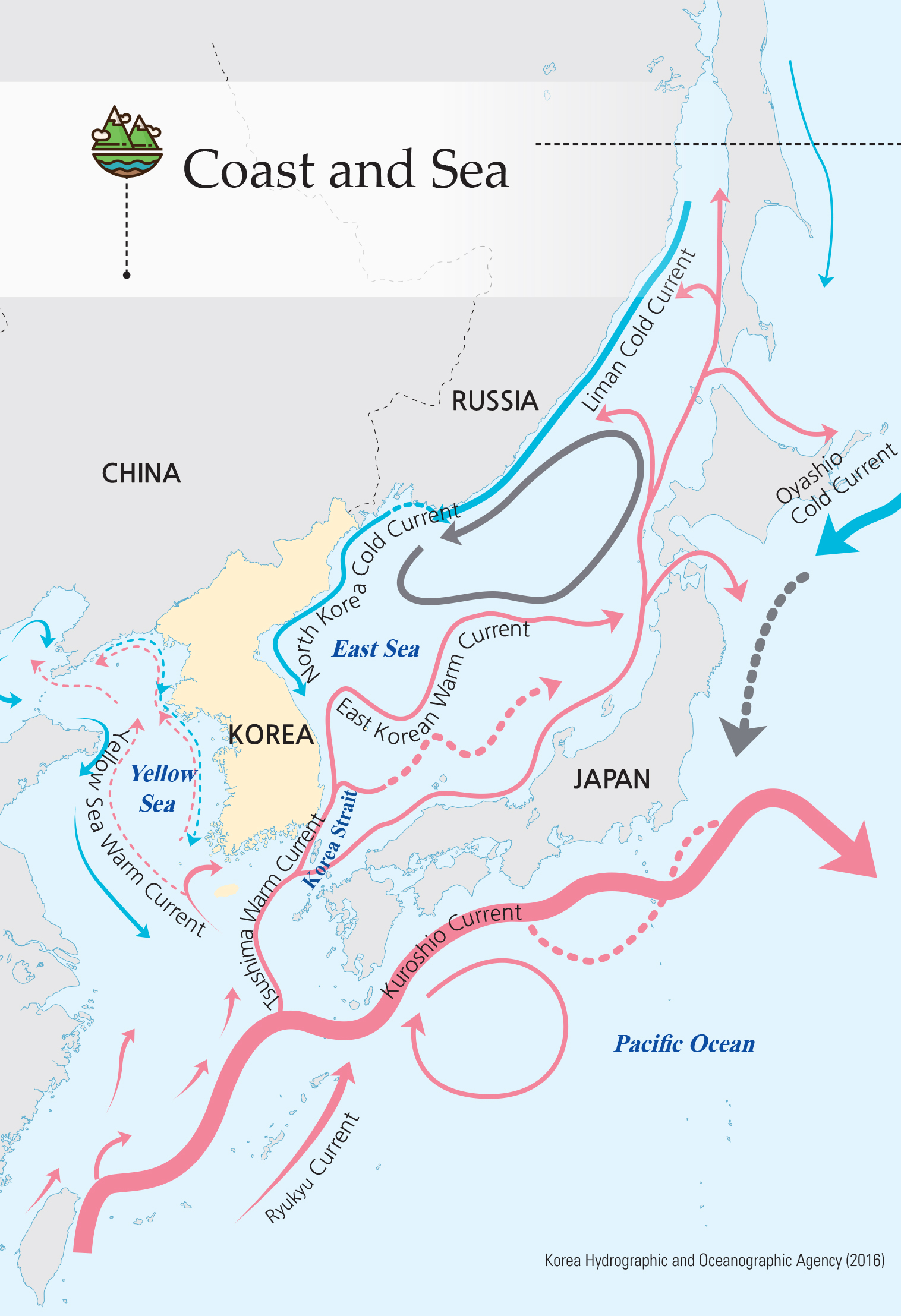for Children
The Korean Peninsula is surrounded by water on three sides, and is connected to China to the north. As South Korea is located at the gateway to the continent, it has a long history of active trading through the ocean. Through the centuries, Korean navigation techniques involving tidal currents, ocean currents, and wind have been more advanced than what was widely known. Korean seas have complicated physical, chemical, and geological factors—such as seasonal ocean currents, tides, and complex topographical features—nd have a range of marine habitats with unique ecological communities.
The east coast has a relatively simple coastline with deep water that reaches depths of 2,000–,000 m. It has well-developed, narrow beaches, but the steep slopes of coastal and seabed topography prevent the development of tidal flats and continental shelves. The Tsushima Current—hich flows into the East Sea through the Korea Strait—preads along the surface of the East Sea.
|


